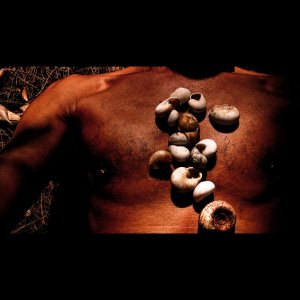The group show featured works by striving local artists, who aim to make an impact on the local and international art conversation. Each artist differs in practice, however, all are up and coming Miami-based artists and present a glimpse into the future of the Miami art scene.
Artists like Atomik, Kazilla, Jeff Dekal, Kat King, Ivette Cabrera, Natalia Molina, Chris Valdes, Deming King Harriman and Buddha Funk presented a variety of work focusing on future, a new discourse on Miami and artistic transition. The exhibit featured painting, installation, illustration, video, collage, graffiti and performances by Xela Zaid, Kendall Morgan and newSense from ArtOfficial.
The works collectively explored the trajectory of Miami’s art scene while each piece individually represented a very personal examination of future perspectives and career visions by each artist.
Focused around a theme of innovation first time curator Tesoro Carolina produced an exciting exhibition inspired by the participating young and driven artists as well as by the community-centric concept of multi-artist studio Viophilia.
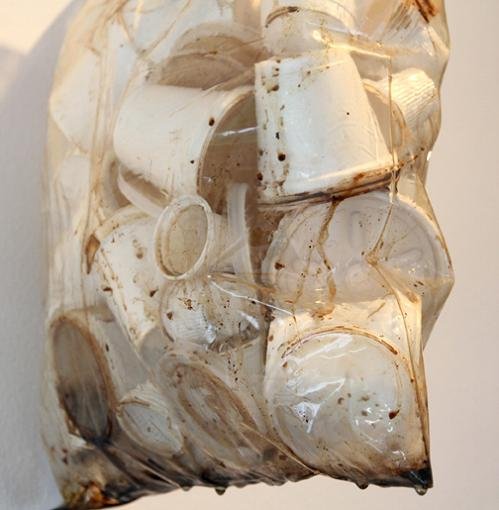
More than 400 young professionals, local
change-agents and engaged Miamians filled The Stage Miami for The Miami
Foundation’s Our Miami Project Launch.
The kickoff event, held on Wednesday, July 31, introduced two new
projects: the Public Space Challenge and Match305, a talent retention project. Both
programs are part of the foundation’s Our Miami initiative, which fosters community by building attachment to the city,
developing public spaces and retaining young talent in Miami.
Our
Miami uses research from the foundation’s Our Miami: Soul of the City study
that clearly shows attracting and retaining young, talented and creative people
in Greater Miami will grow the economy faster than other, more traditional
measures of economic development.
“Looking
around the room at all of this young talent, I can’t help but feel optimistic
about Miami’s future,” said foundation President and CEO Javier Alberto Soto
during his remarks. “We are not a place where you have to find your niche within
a sprawling, established city. Planting
your roots in Miami gives you a chance to shape this young, dynamic community. Our role on the global stage depends on your
vision and your contributions to our growth.”
The Miami Foundation developed the Public Space Challenge to
uncover the best ideas for creating and improving local public spaces: parks, libraries, public
buildings, markets, plazas, playgrounds or any place where people can convene
and connect. Anyone can submit ideas. Community experts and professional
placemakers will identify the top ideas; The Miami Foundation will invest
$100,000 to make the ideas become reality. The Health Foundation of South
Florida joined the challenge, adding an additional $20,000 to fund public space
ideas focused on nutritious food access and physical activity.
The Miami Foundation also launched Match305, a talent retention project and Web survey. The online tool measures an individual’s “attachment” to Greater Miami and provides suggestions about how to become more engaged where they live. Results will be made available to community stakeholders to help guide talent retention efforts. The tool is based on research from a Georgetown University study and has been instrumental in reducing year-over-year employee turnover at Fortune 50 companies. Florida International University signed on as a partner in the project, investing $10,000 with Match305 to aid their ongoing local graduate retention work.
The Public Space Challenge will accept ideas through September 19. Anyone in Miami-Dade County can submit a challenge idea or participate in Match305 by visiting ourmiami.org.
About The Miami Foundation:
Established in 1967, The Miami Foundation has helped hundreds of people
create powerful legacies by establishing custom, charitable Funds. More than
$150 million in grants and scholarships has been awarded in the Foundation’s history.
Today, the Foundation stewards more than $160 million in charitable
assets. Through its Our Miami
initiative, the Foundation positions Miami as a premier place for young talent
to live, work, connect and engage. Visit miamifoundation.org and ourmiami.org for more information.
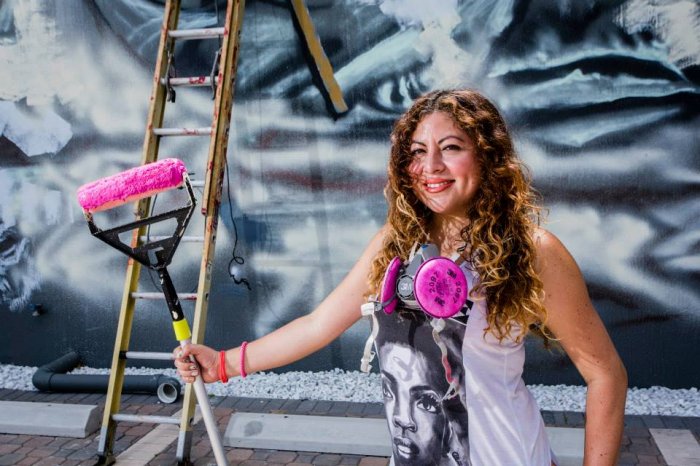
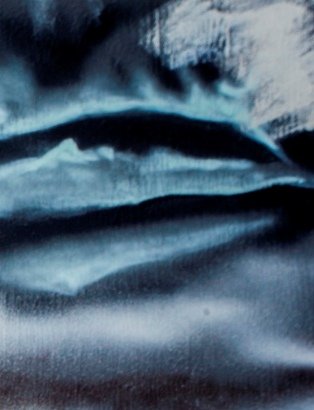
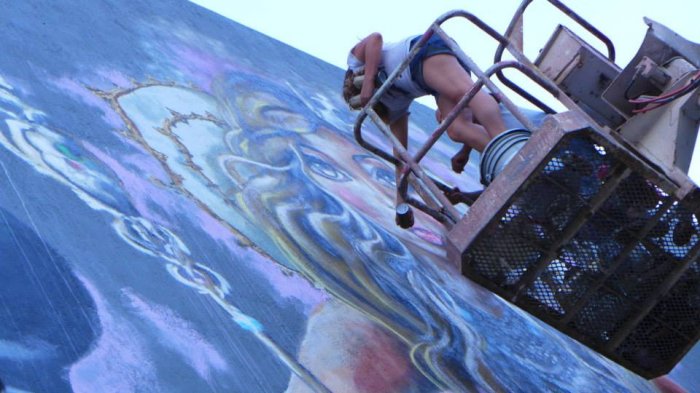
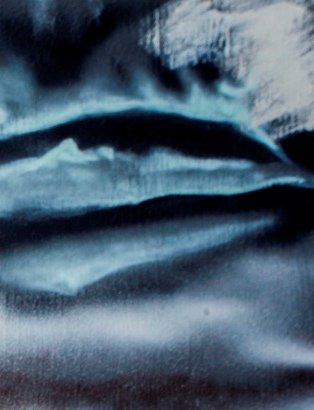
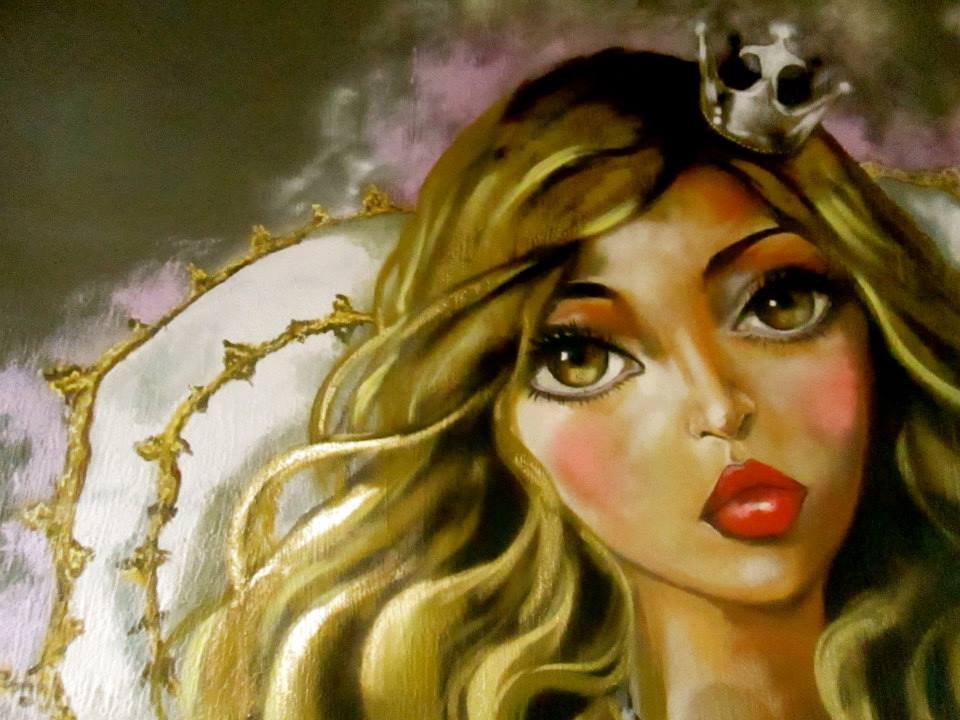
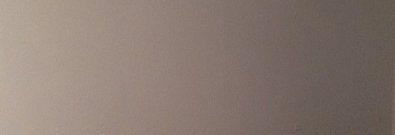
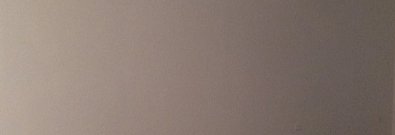


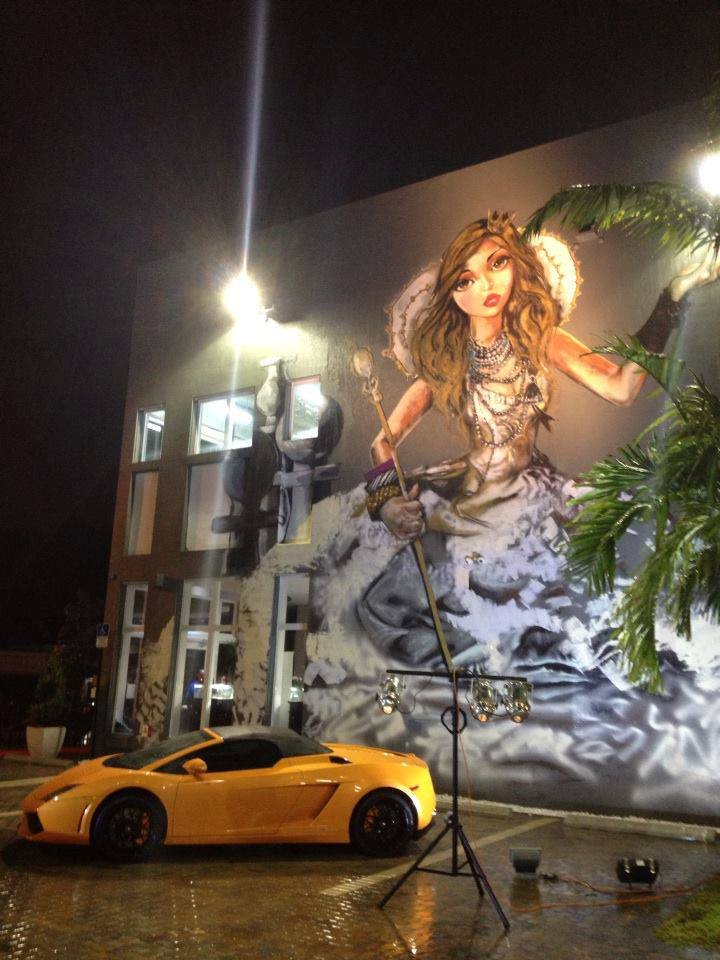
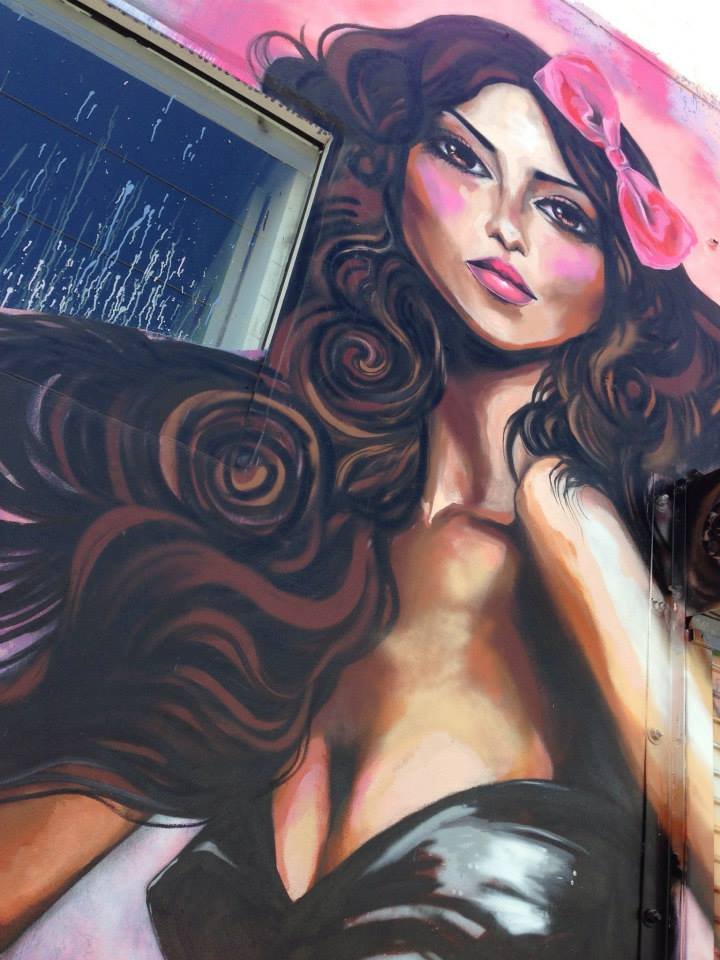
Where are you from?
I grew up in Miami but I was born in Chiclayo, Peru.
What do you love most about Miami?
I love the weather. I like the tropical weather and the beaches. I like the Latin culture. It is different from the rest of the United States.
How much of your Peruvian heritage and culture do you see in your art?
I think a lot of the colors. Especially pink. When you go to Peru, like Machu Picchu and the mountains, you see a lot of the patterns and the clothing the native people wear is hot pink and neon green.
Do you travel to Peru regularly?
I go visit my family but I have never gone to the tourist places so I am going to go next year.
Where else do you want to travel to next?
I have not been to Asia. I want to travel to Japan and China. I want to go all over the world, little by little.
How long have you been painting?
I have been painting since I was in elementary school
How would you describe your style of art?
My art has always been feminine. I like a little bit of fantasy and whimsical details. Frida Kahlo inspired my work. I love how she is able to express emotions. I think my work is very feminine and it touches people’s emotions. I can express emotion very well. I also love fashion. Patterns and clothing and trends inspire my work, too.
Who are your favorite designers?
Betsy Johnson is my favorite. I also like Stella McCartney, Michael Kors and Gwen Stefani.
You started out with gallery work and you have recently done street murals as well. When did you start with the murals?
About a year and a half ago. I have a lot of friends that do graffiti. They pushed me to do art on a wall. The first time I did it was at Cushy Gigs. I did a character there. Inside there are a lot of amazing artists, all women artists like Tatiana Suarez. I am very proud this was my first time I did a character. I like that street art brings happiness to the community. That is how I started loving it. I like to give my art to charities and do things that help others.
Are the women in your paintings and murals based on real people or do they spring from imagination?
I think people. I watch people, sometimes my friends. Unconsciously I draw them or myself. When I draw realistically I use my friends as references or people that I like in magazines.
If you could paint any wall or any building in the world, which would you choose?
I like La Familia Sagrada in Barcelona, Spain. Antoni Gaudi‘s architecture is just beautiful. It is art. It is like Alice in Wonderland. It is so magical.
You previously mentioned you express emotion in your art. Do your paintings and murals reflect your emotion at the time of painting or the imagined emotion of the character?
(laughs) It is usually about me and how I feel. It comes out in my art. It is very hard to hide it. It comes out without me thinking. Sometimes, if it is for a client, if I am feeling mad or sad, I have to make sure that it doesn’t look like that even though that’s how I feel. I adjust it for a client but when it’s for myself I just let it flow.
We have to talk about one of your latest murals, “Queen Isabella.” Tell us a bit more about it please
The story of Queen Isabella is that when Christopher Columbus was coming to America he came to the King to ask for funds for the trip and she was going to pawn her jewels. That is where the story of the pawn show and Isabella came together. The mural is half finished. They want me to do the whole building so I will add more to the story. In the mural Queen Isabella wants to finance her dreams cause when you go to the pawn shop you can trade something for funds to pay for education or travel or business. Out of her hands jewels will come out and maybe images of dreams and the ship of Christopher Columbus. It will go all around the building.
Have you done any murals outside of Miami?
I did a little mural in New York. I wanted to do another one this summer but I was too busy and I am a teacher so I have to start work in two weeks. Usually, in the summer, I love to travel. I want to travel and paint in California and New York and Puerto Rico.
How tall is the Queen?
40 ft
How important and inspiring is the traveling?
I love to travel. I love culture and people. I went to India two years ago. All the colors and the people were so beautiful. I went to school in Italy. All of that really influenced me.
What direction do you want to take with your art? Are you planning to experiment with another medium?
I definitely want to do installation. I am working on an idea with movies and mural making. Film and installation.
In the current group exhibition ay Wyn317 you included paintings inspired by “My little Pony.” Are those paintings based on childhood memories?
Yes that is something that I loved growing up in the 80s. I love “My Little Pony.” It was just something fun I wanted to try. I did a collection of ponies before for a pop art show. I also did ponies in a mural in the Bird Road Art District. It is fun. Two giant “My little Ponies.”
Do you have a fascination with horses in general?
Not really. “My Little Pony” is just cute. I have ridden horses but they can be a little bit scary. When I went to India I wanted to ride everything because they have a lot of animals. I rode a donkey and I rode elephants and I rode a camel. Camels are very tall and it is very wobbly. I liked the elephants the best.
Do you have any upcoming exhibitions?
I have one in Pembroke Pines called “About Face” curated by Jill Slaughter in October. Barbara M De Varona is going to be there, too. It is a group show and it is all about portraits.
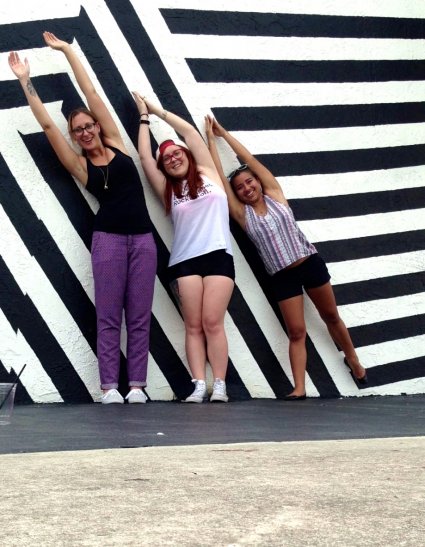
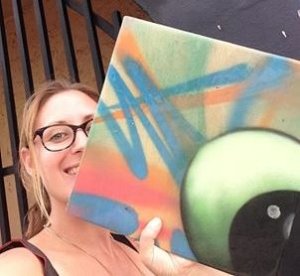
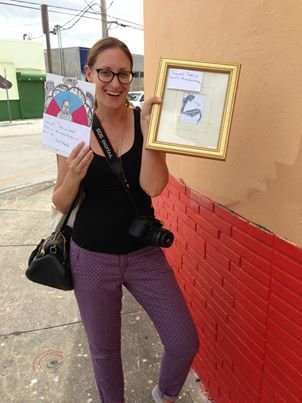
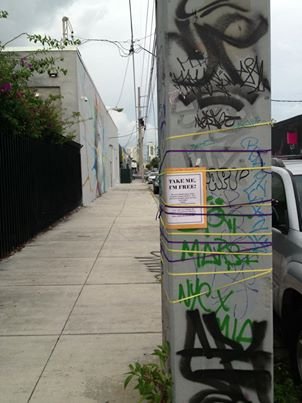
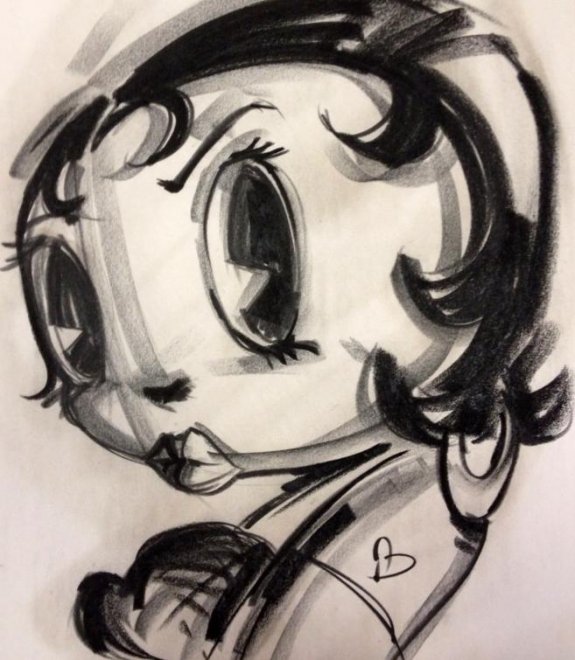
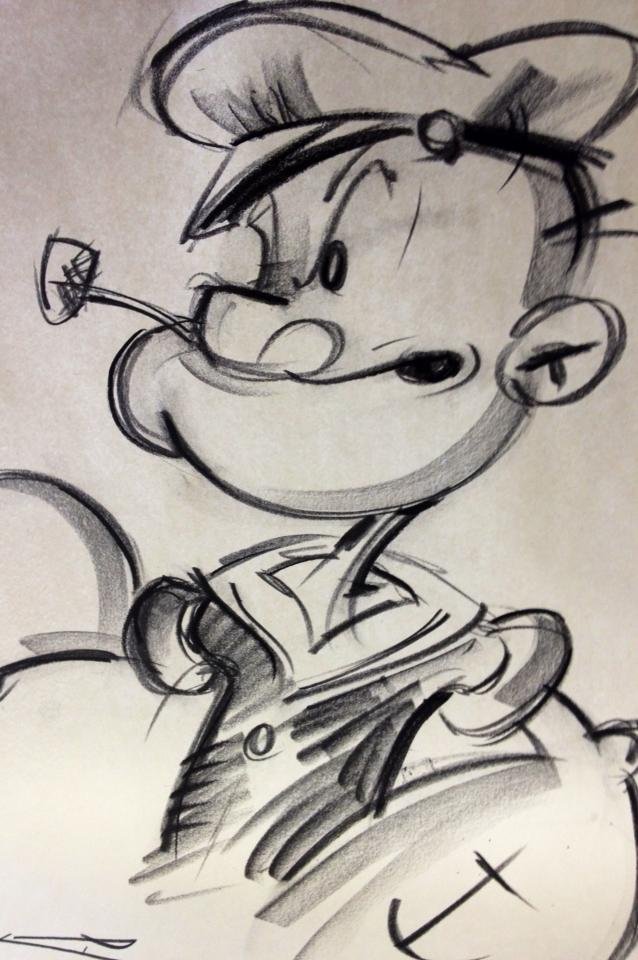
What do you love most about Miami?
I love everything about Miami. The sunshine, the people, my friends. I am semi-native but I consider myself a full native. I have been here since I was five years old. This is the only home I know.
You started as a graffiti artist. What was the graffiti scene in Miami like growing up?
It was fun for me but it was different from what I see today. Today I see a lot of friendly atmosphere where crews co-exist. In my era that did not happen. Wynwood was our neighborhood. I was a part of the VO5 Crew, best crew in Miami history. Everything we did was trendsetting, cutting edge. We were ahead of the curve by all means. Still to this day it is still a legendary crew. As far as the scene, there were a lot of gangs back then and it was a little violent. We did fight, we did throw down if you went over our tag or came into our neighborhood. It was fun but I guess that environment, for a young man growing up, with all the hormones and the issues that we had at 16, 17, 18, it was just great and we loved it. Now I look back on it at 42 years old and married with two kids of my own and I am kind of happy it was taken a turn to where it is now. It is more about respecting art and other artists and working together, coming up with ideas together. It has changed most definitely a lot and for the better.
You said VO5 is legendary and was always ahead of the curve. Tell us a bit about what you did then that stood out to this day.
Our productions were very large productions and they were all done in one night. These days graffiti artists have the luxury of mostly doing a lot of work with permission which, I guess, is nice. The quality of the work is still there and it is beautiful work but I do not see the challenges that were presented to us as kids. We worked by street light or by no light and we had eight hours of nighttime to produce our work. Coming back was a risky option which we did not enjoy taking advantage of so we tried to do our pieces all in one night. As far as cutting edge, we came up with different techniques and different looks. They were not cookie cutter bubble letters or whatever everybody else was doing. You could spot a VO5 piece and know that was the VO5 crew that created that production.
When did you transition from street art to gallery work?
20 years after I used to paint on walls I found myself living in a bad economy, came to Wynwood for an art walk, saw what was in the galleries and I told myself as well as my family that I could do this. I had their full support and today I am an artist, going three years strong, loving every minute of it, wish I would have started earlier. I am here now and I am planning on making a mark.
You often paint Popeye. What do you like about that character?
Popeye is more of a nostalgic childhood thing. As a kid, believe it or not, I could never draw that guy. It was one of my challenges. Now that I am older and more years have gone by, I guess, I am more observing, I think I kind of nailed this guy. I would love to reach out to Warner Brothers and see if I could start doing him under contract but for now I am just happy to do him and do him well.
You also used another iconic image, of the Coppertone Girl. Why?
That whole series of paintings started by me thinking of something interesting and I thought “What could be more interesting than my childhood?” As a kid I was very much always in trouble at school and I would spend many long days driving around with my dad. He would have to take me to work with him. He was a road sales man. I saw all these images on a daily basis and I remembered the Coppertone Girl and I thought it was a fascinating little figure. That was basically the reason behind me painting her.
What inspires you besides your childhood?
The things that are around me. Things that I see and things that are part of everyday experiences. I bring that into my work.
You have a distinct style. When did you develop that style?
That style is still in the developing stages. If you look at my earlier work, there is always hints of what used to be and hints on what it is going to be. It is very hard to see my fingerprint if it were not for the texture in my work. My style basically is what I feel at the moment and where the work is taking me. There comes a point in the work where I tell myself to put it done and be done.
If you could own any work of art. What would you choose?
There are so many. That’s a funny questions because I do not have any of my work hanging in my house.
Why not?
I do not know. I am not really into that vibe. As far as other artists’ work, I have a small print of a Vincent Van Gogh and a have a print from Ricky Mastrapa.
Back to the questions. If you could own any work of art what would you choose?
If I could own anything I guess it would be Rembrandt’s “Girl with the Broom.” I connect with something about the look of that piece. In that era it was juts a little peasant girl and to see the emotion that he grabs in her face. There are so many angles to that painting you could sit there for hours and always find something interesting about it.
Where do you see yourself going next with your art?
I am thinking of going back more to my abstract world inside my head. With some of the figures making an appearance now and then. I really would like to go even larger than my work now. I am a bit limited by the space I have to work in. I would love to go way larger. I come from a background of walls and to be working on something so small makes you feel confined. I just want to go crazy and blow something up.
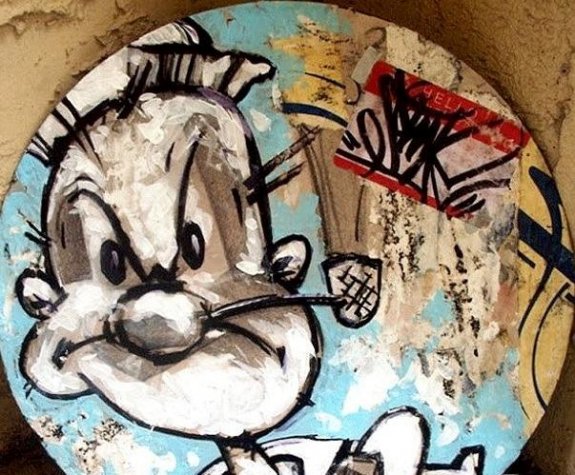
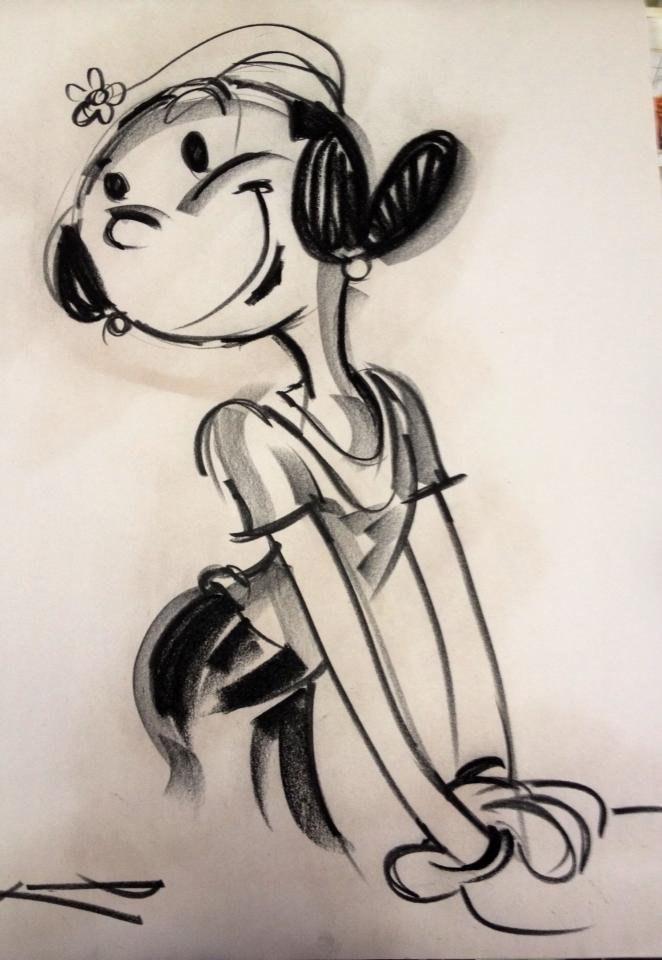
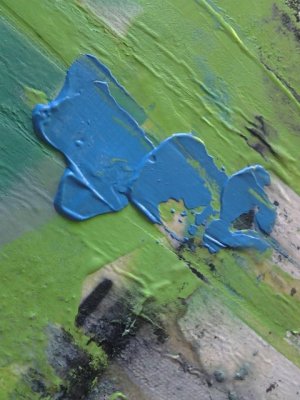
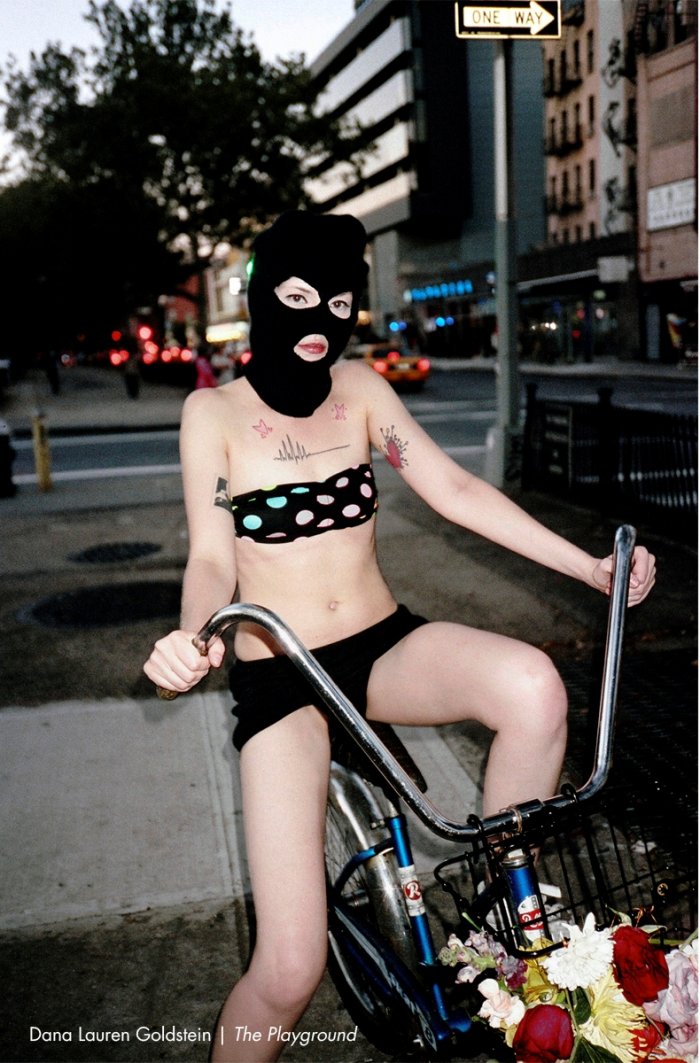
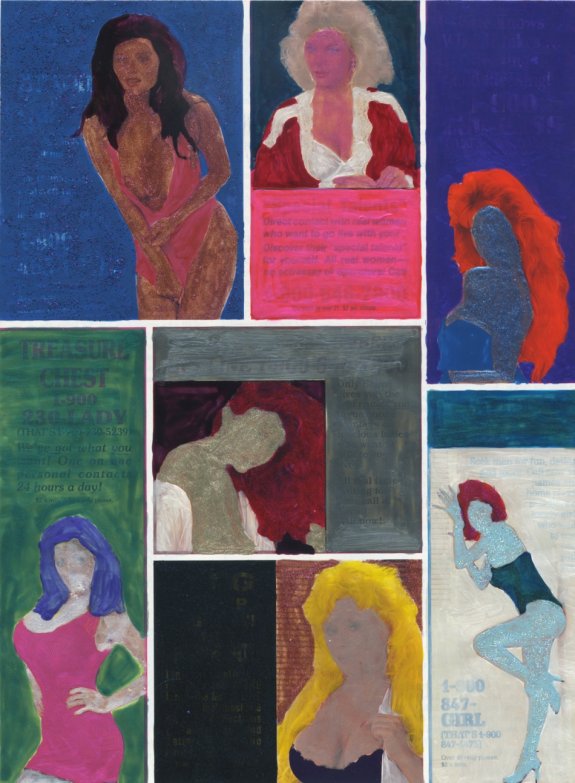
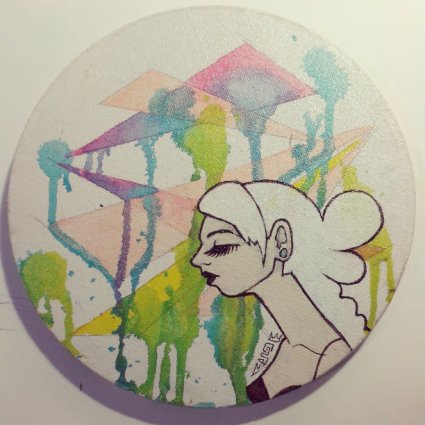
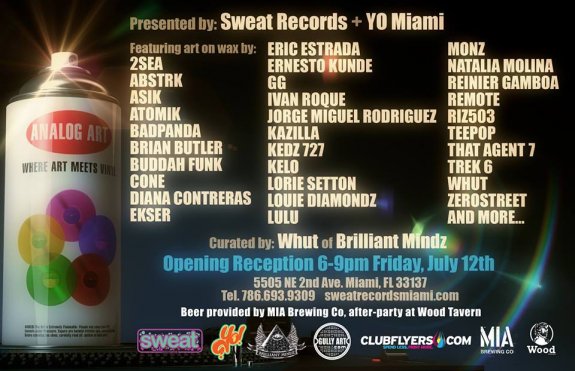
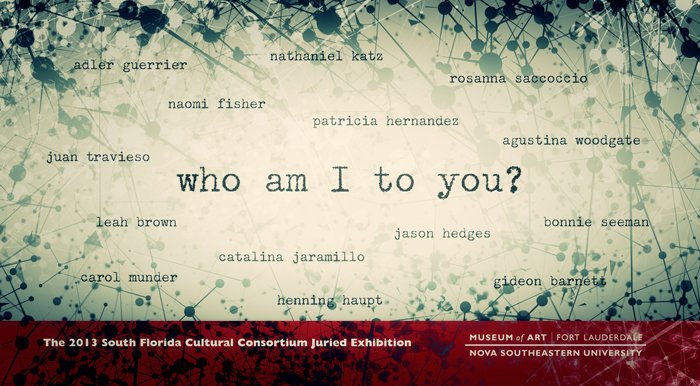
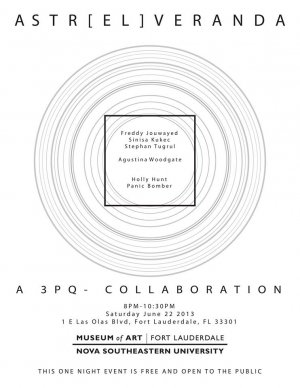
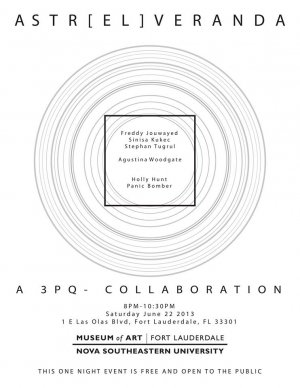
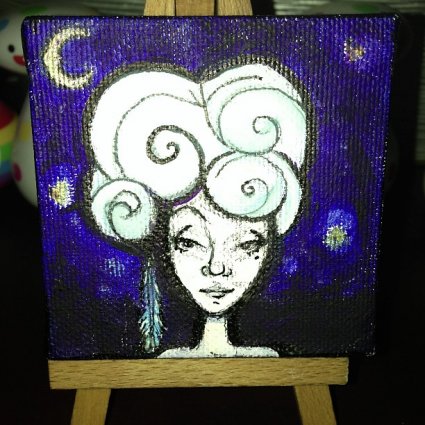
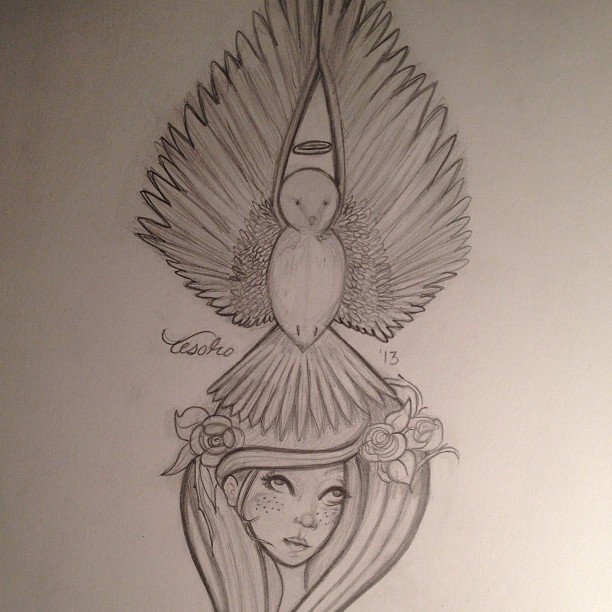

How did you get into art?
I guess the beginning would be my mom. She saw that I was a hyperactive child and instead of giving me computer games she always bought me arts and crafts kits. She always gave me something to do. By the time I was old enough to ask for things, that’s what I would ask for. I was home schooled most of my life. I never had the opportunity to develop in high school art classes. When I got to college I took two key classes that changed my life, figure drawing by Jennifer Basil and Intro to photography by professor Tony Chirinos.
Meet Tesoro Carolina, born in New Orleans and raised in sunny Miami this young artist has always been a Miami girl, with some serious talent….
When did you start to take art serious?
When I was about 19 or 20. I knew when I started college that all I wanted to do was submerge myself in the arts. At first I was really apprehensive and I did not feel like the art world was for everyone, like only blessed prodigy children. Little by little I learned that I can do it, I can do what I like. I quit school and began apprenticing at a tattoo shop, I was able to learn from all different types of artist. I found work with amazing and talented curator Anthony Spinello, whom really opened up my artistic pallet as well as aid my thirst to create art of my own.
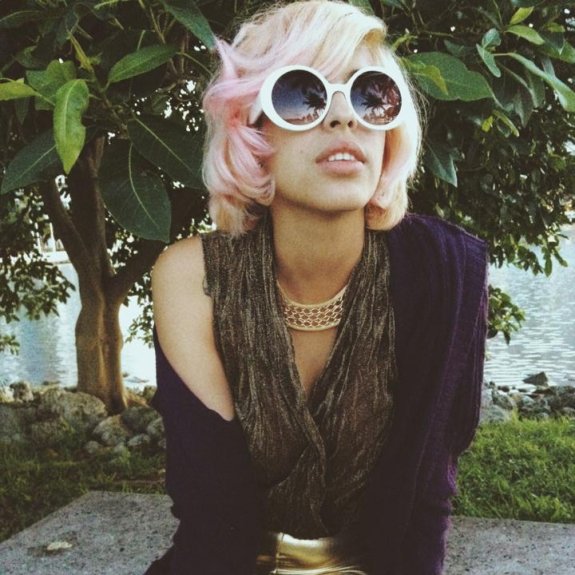
What medium did you start out with?
I started with what came easier to me and photography was the first thing that I could do. When I was a young girl I was always fascinated with the fact that you can capture moments like that. It was almost insane. It blew my mind. I started taking pictures and little by little I would just start drawing on the side.
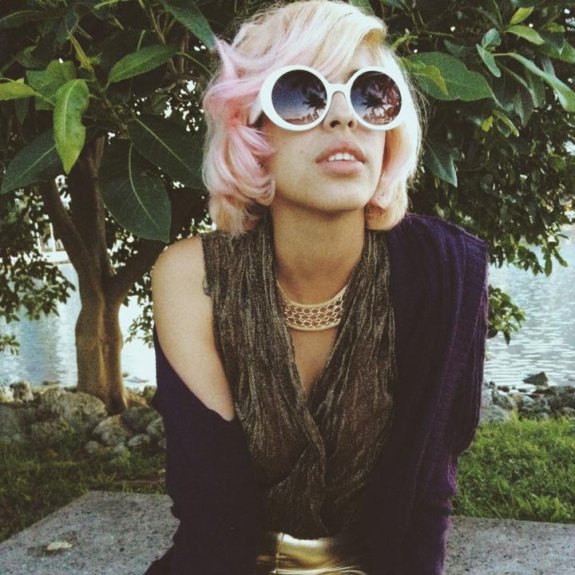
Do you still do photography now?
Yes. My photography is mainly about people. I do not do scenery photography. It is all about portraits. One of my jobs is with the Miami New Times. They send me to events and I take pictures of people having a good time. I love it. I love the interaction with another person. Usually I have to tell them, hey I wanna take your picture, do you mind? And everyone is ready, posing and acting a fool. I love it! I am not really into catching people off guard just because I feel that it’s unfair. Usually people love it. As soon as I ask to take the picture they do not treat me like a stranger anymore. All of a sudden I become like their best friend. That is one of my favorite things.
When did you start painting?
I started painting when I was a young girl . It was not technically good. I would use sharpies and paint the wall. My mom would hate that. When I was five or six I picked up nail polish and painted a wall. I don’t know what gave me the idea but I remember doing it. I have been obsessed with it ever since. When I was 15 I painted a mural in my room without telling anyone.
Obviously you are painting more now and on a serious level. You mentioned your teachers and Anthony Spinello earlier. How did they encourage you?
Huge inspiration. Just by being themselves they encouraged me to be myself, too. When I worked with Anthony Spinello he never said, hey you should draw more. Just by him being himself would make me want to make more art and make me want to do my own thing. He is so strong in who he is that I wanted to be strong in who I was, too.
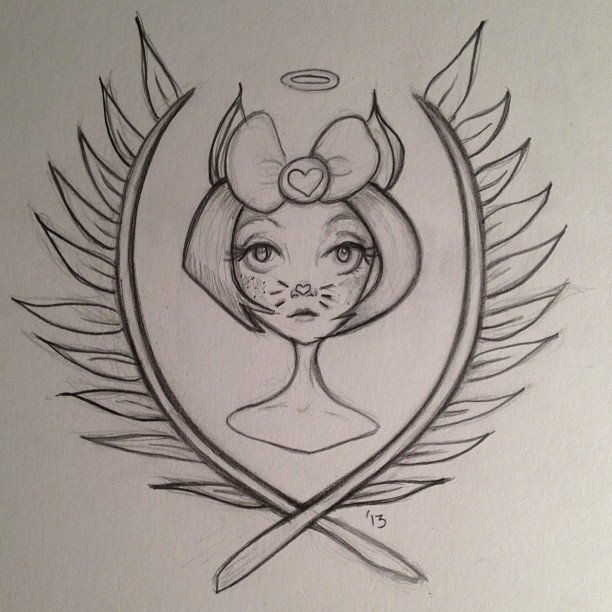
Many of your paintings and drawings feature women. Could you elaborate?
I always heard about Mother Nature. I always saw her as a womanly figure. All of us women are Mother Nature. All of us have characteristics that are natural. That was one of my biggest inspirations. Nature is a woman. Being a woman inspires me. It is a man’s world but I feel lucky and privileged to be a woman and that is what I want to portray.
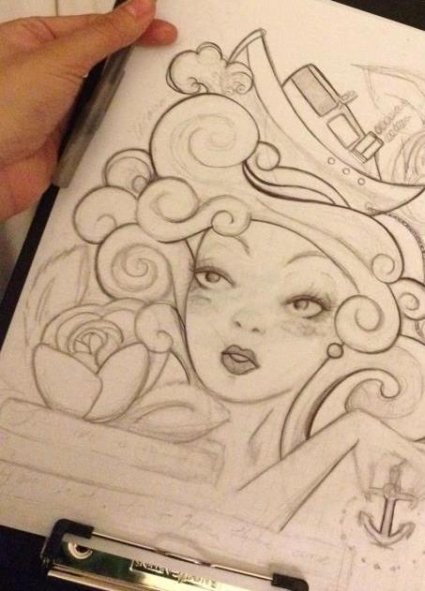
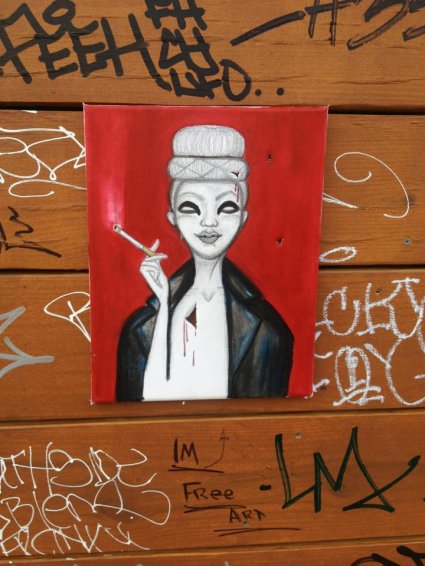
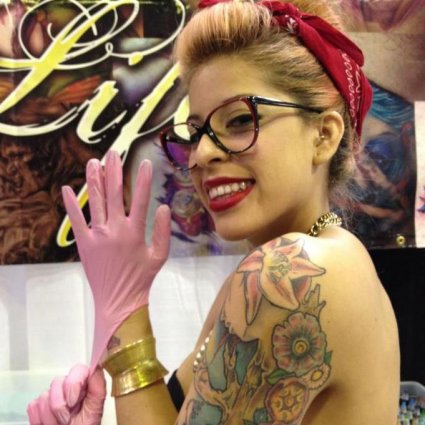
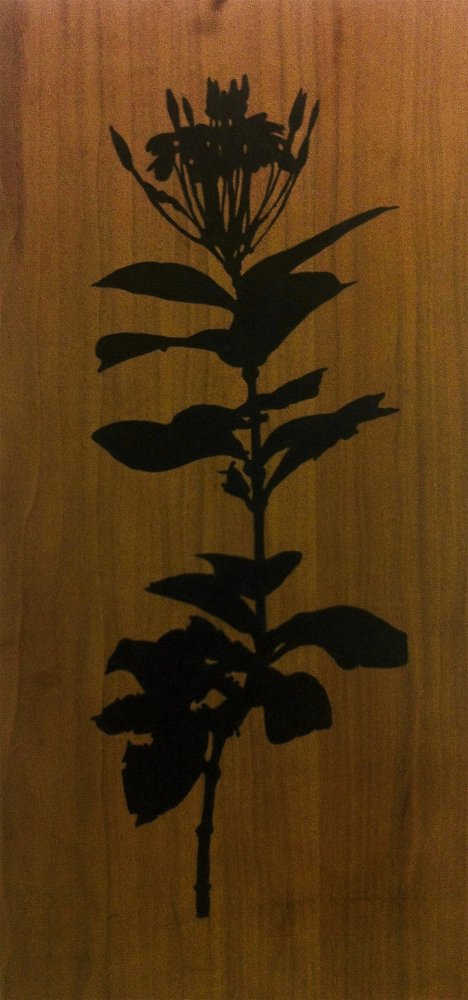
Can you talk a bit about your career to date please
The first show I had was in 1968. There were not many opportunities in Los Angeles, where I was living at the time. From about 1975 until 1989 I was in hiatus, so to speak. I had gone into making clothes, doing fashion design for men and women based on African and Asian styles in construction and also using tie-dye batik. I used natural fibers. In the 70s people wore polyester and I hate that stuff. I was doing the clothing and then I started racing bicycles. I was in Italy when I made the decision to do art again. I was there for six months to work and race bicycles. The reason for my hiatus was racism. I walked into a couple of galleries in California and their attitude was “what the fuck do you want?” I really got rude responses.
If you are getting these kinds of responses from galleries then obviously that is a hard road for a young person. You are spending thousands of dollars for an art education and then have no opportunity. I was always interested in exhibiting in museums because they seemed to be more open to exhibiting a variety of things. In the 70s museums were organized differently from now though. I lived in California for 19 years. I am originally from Ohio. When I came to Florida, I came to visit relatives. I came to visit in Fort Pierce and even though it was backwater compared to San Francisco there was something very nice about the place and I liked it so I decided I was going to move there. I have been in Miami since 1994.
What was the art scene like in Miami in the 90s?
Not very much. There was a little bit going on . I was living in Coconut Grove and I had met a couple of people that were involved in educational community projects. I tried to do my own art practice and I was in the gallery of a Haitian dealer and collector who was here for a short while. Otherwise I did mostly shows in the library system. Galleries did not seem to be interested in the subject of my art practice. A lot of it deals with African-American culture and the African Diaspora in general and there is a relationship to Florida.
That has changed though. Museums and collectors now own your work.
My work is in a few museums now . The Museum of Contemporary Art in North Miami, The Vero Beach Museum of Art and I have work in the collection of the Washington State Arts Commission and a few colleges and private collections.
Do you think the educational aspect of your work deters galleries?
Well, galleries I think are changing but back then racism was involved, I hate to say it. That is part of it. A commercial gallery has to find collectors and you do not see many African American artists in any galleries. I am talking specifically about Miami. I think that my art practice has been pretty much the same but my working methods have changed.
Do you have a preferred medium?
I have a bachelors degree in photography but over the last few years I have been doing less and less photography. I did not really think about it. I did a solo exhibition at the FIU downtown Fort Lauderdale campus. Bonnie Clearwater saw some of the works like the video and she liked those.
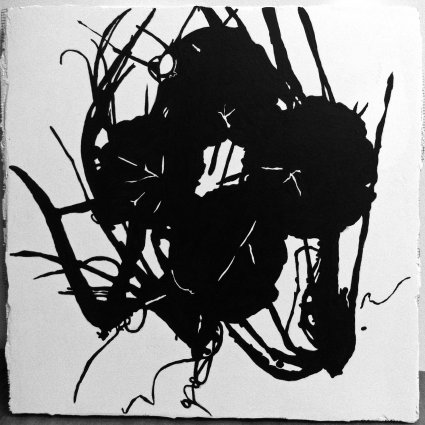
How much video art have you done?
Honestly, not a lot. I did about ten pieces for my solo show but I think only three of them were any good and I was really kind of surprised about the one that MOCA collected . Nobody had really seen any videos of me so there was no way I was able to judge what kind of reaction I was going to get. I had never done any or shown any. Then, all of a sudden, I hear “oh this is great.”
What attracted you to doing video?
I wanted to do video a long time ago and I tried to do some but I really did not have a good camera. Then somebody was saying someone made a feature length film with an iPhone so I said, oh I can use my phone.
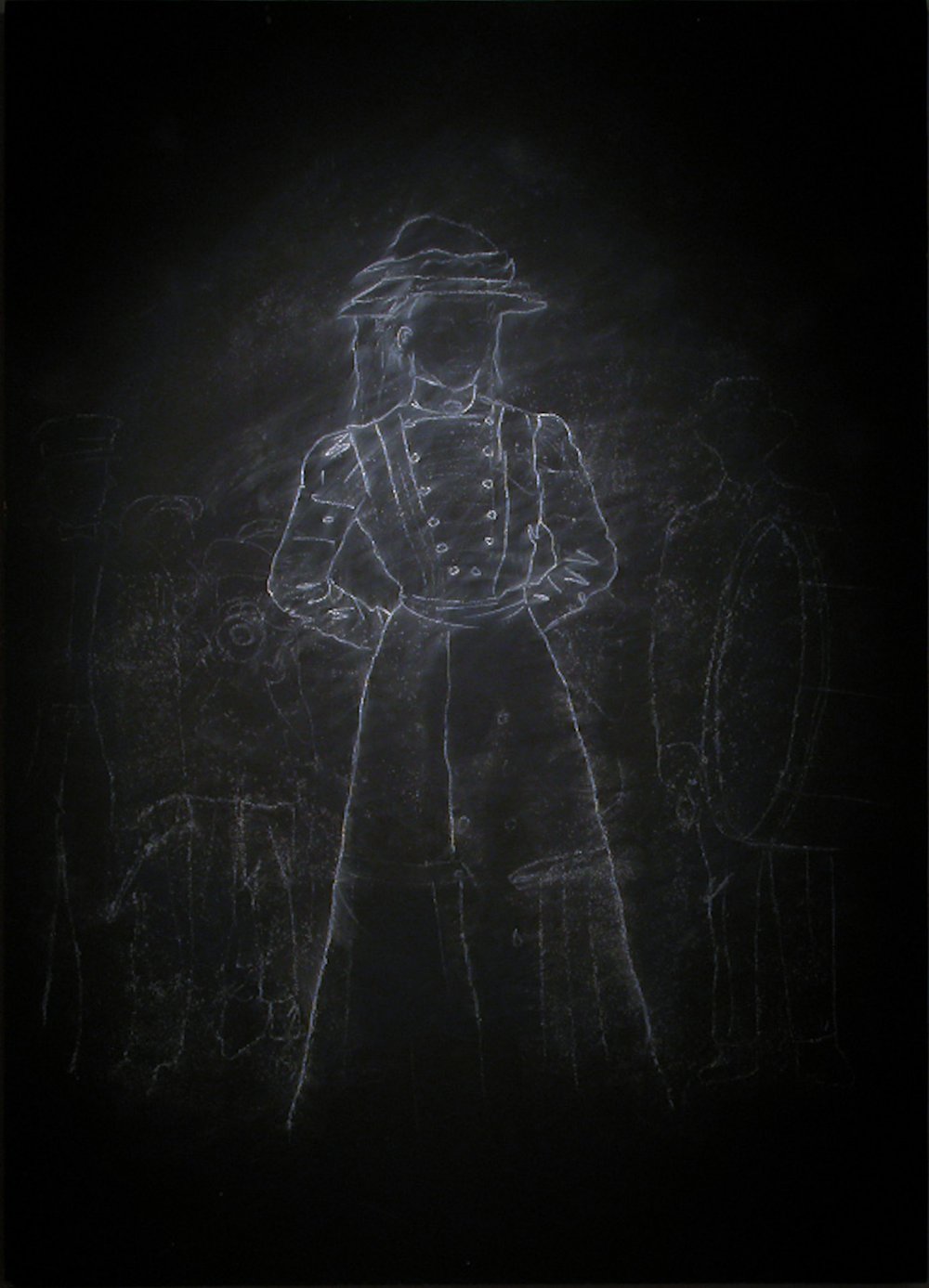
A lot of your work has a historic aspect to it. Can you elaborate?
It used to be just an idea but now, for me, like the video that you saw, Florida is the conjunction where Southern African American, Caribbean and African Diaspora all meet. If you look at the coast line of West Africa it is very similar, with lots of mangroves . It enabled me to rethink the landscape there in a fictional way but also because it is very desolate lots of animals and it is pristine . Now it is getting encroached by buildings on the edges but still you can see areas where there are no buildings. You can still play with ideas.
Was your approach from a standpoint of documenting and researching African Diaspora history in Florida or about Florida in general?
I was thinking more of the Diaspora . Florida has an interesting history. A lot of Africans went to Cuba and Haiti from here and even the Bahamas. In the period of time between Spanish rule and British rule . It was interesting in the sense that people migrated in different ways. My family moved here in the 1920sand Florida had not really been part of the United States for that long. I am thinking about the native population and what kind of interaction would have happened with the native population away from the Euro American communities.
What are you currently working on?
I am still looking into botanicals. Most things are kind of related to herbal medicines and foods but I am doing them in silhouetted shapes so you don’t really know exactly what they are unless you are really familiar with the plants. They just become forms. I also want to continue working with more figurative pieces, which is the reason why I was interested in the Dawoud Bey show. I have been surreptitiously been taking pictures of people on the bus and I use them for a bunch of silhouettes.
You curated a show in the Design District that opened on June 8. Tell me about your initial idea for the group show “Dirt”
William Cordova and I were having a conversation and somehow the conversation turned to dirt and the significance of dirt in various cultures. I was telling him that I had been to Minnesota years ago, around 1999, and had collected dirt and actually shipped some of it back to myself including some bricks from a building that was part of a mineshaft. We went our separate ways and I kept thinking about that conversation and thought that I should curate a show about dirt.
What did you do with the dirt you collected in Minnesota?
Some is in a box and in a milk crate and it is still here. I have not even opened it because I had been back several times and I got more dirt so I have collected dirt several times.
Why did you originally think of collecting it and bringing it back with you?
Because it was beautiful. It is red because of the iron in the soil in Minnesota. It was really fine and I wanted to mix it with some water and use it for painting or something like that. So that was the original idea.
How did you choose the artists for “Dirt?”
I had a gallery in Wynwood and I still have the website so I was using that as a curatorial project, called ArtLab 33 so I sent out a call through that website and there are four artists in the show from that call. David Rohn and Alette Simmons I have known for some time. The other people, I asked. Edouard Duval Carrié, he works with bacteria. He has used microscope images of bacteria. The two photographers from Arizona I met online many years ago. Kim Nicolini I have known so I asked her.
What concept did you give them?
I just gave them a little paragraph when I did the call. Any and all concepts about dirt. Even though there is a lot of literal dirt here. When I was doing the research, this goes back to the title of the show, I saw that in the Philippines for instance there is a whole culture around dirt. Especially women use dirt as pigment for tie-dye pieces. In Haiti people were eating dirt, pregnant women were eating dirt for the nutritional value it provides and women in the Southern United States as well. I remember my family talking about that a long time ago. It wasn’t about the literal. It’s like Robert Chambers talking about the one grain or one little spec of dirt transformed into a solid block of marble.
Can you tell me the meaning of your name?
I legally changed my name in the 70s. My brother had a friend who was a Nigerian boxer by the name of Sugar Ray Adegun, who was one of the African champion boxers. He gave me that name. It means “The Artist Returns.”
